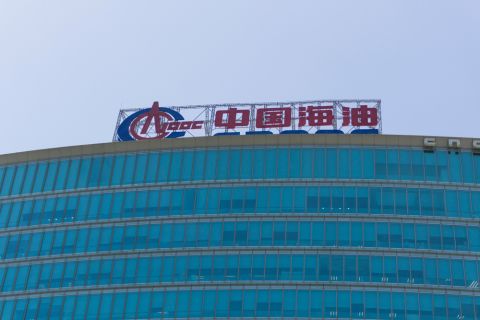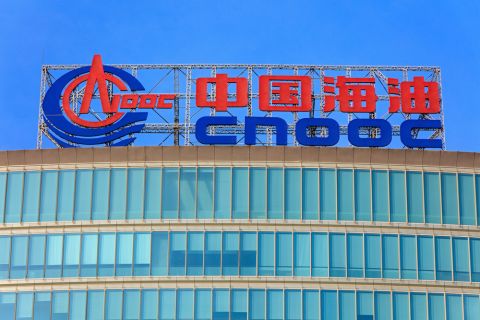When Cheniere Energy opened a new liquefied natural gas import terminal in Louisiana in 2008, a U.S. shale drilling boom quickly made it obsolete. Seven years on, with the Houston-based firm about to open a landmark export plant on the same site, the timing, again, is far from ideal.
A Reuters analysis shows that a slump in oil prices and global abundance of LNG threaten to undercut the economics of U.S. gas exports, crimp shippers' profits and possibly reduce demand for facilities such as Cheniere's $12 billion Sabine Pass plant, the first to send U.S. shale gas worldwide.
New supply across the globe, faltering demand and a steep drop in oil-linked LNG prices will make short-term, or spot, deliveries of U.S. gas to markets in Europe and Asia unprofitable next year, according to the Reuters calculations.
The calculations, corroborated by analysts, raise questions about the profitability of short-term shipments not just from Sabine Pass but from the four other U.S. export plants under construction and expected to come online in the next four years.
Four other U.S. projects have already broken ground, including Dominion Resources' Cove Point plant in Maryland expected in 2017, Sempra Energy's Cameron LNG in Louisiana and Freeport LNG's plant in Texas expected in 2018, and Cheniere's Corpus Christi plant in Texas in 2019.
Two plants have construction approval in Canada but are yet to break ground. More than a dozen other North American projects are awaiting approvals, though analysts wonder how many will be ever built, given the market conditions.
"U.S. LNG will materialize at a time when the biggest market (Japan) is witnessing a demand reduction and when supply is growing again massively thanks to Australia," said Thierry Bros, senior gas analyst at Societe Generale. "This is the worst possible timing for this new LNG that has no dedicated market."
Experts do not expect Cheniere's pioneer export plant to sit idle as its import facility did. BG Group, one of the biggest suppliers of LNG in the world and the main shipper for the plant's first phase, will be able to profit by shipping U.S. gas under existing long-term contracts with Asian buyers that offer higher prices than the short-term rates. A rise in oil prices or an export outage in Qatar or Australia could also quickly lead to a price rebound.
Responding to Reuters' analysis, BG Group said LNG from Sabine Pass would feed into its global portfolio, ensuring safe and reliable supplies while "optimizing" returns.
Cheniere's bottom line is protected by a $400 million annual fee which BG Group will pay the plant operator to ship 3.5 million tonnes per year, an amount BG pays whether or not the gas is shipped. Cheniere did not respond to requests for comment.
Of the owners of the other plants under construction, only Freeport LNG and Dominion responded to requests for comment. Both said that they would not be exposed to commodity price moves because of the annual tolling fees that shippers will pay.
"We hold 20-year liquefaction tolling agreements with our customers and we are not exposed to any market risk upstream or downstream," Freeport spokesman Charlie Rexford said.
Falling Prices, Falling Margins
Because LNG prices outside the United States are linked to oil, a 50 percent fall in the value of crude over the past year has slashed the price that LNG exports can fetch.
Based on 2016 oil futures, Asian LNG long-term prices will be around $7.80 per million British thermal units next year, half of last year's levels. LNG spot prices in Europe will be just over $6. U.S. gas prices were around $2.30 this week and are expected by analysts to average around $3 next year.
This week Cheniere chief executive Charif Souki said Europe would need to pay $8 and Asia $9 for future LNG projects to be economical.
Assuming an average U.S. gas price of $3 in 2016, and factoring in the cost of liquefying that gas, shipping it, and paying the $400 million annual toll, BG could make a profit of $227 million selling all its LNG from Sabine under long-term contracts to Asia.
But with oversupply in Asia and importers already selling off parts of their long-term supply, it is unlikely that BG will be able to squeeze all the supply from Sabine into long term contracts.
By contrast, selling all of the U.S. supply short term to uncontracted Asian buyers would leave BG with over $18 million in losses, the calculations show. These short term, or "spot", cargoes now fetch less than the contracted supplies.
LNG shippers tend to strip out their biggest costs when accounting for whether cargo trades will bring profits or losses. Under this method, BG is poised to collect about $886 million profit from oil-linked sales, $641 million in Asian spot markets and $622 million in Europe. But most of those profits are erased when full costs are taken into account, according to the Reuters calculations and industry sources.
"There were already serious questions about how much North American LNG would be commercially viable prior to the collapse in oil prices," said Katherine Spector at CIBC in New York. "Now cheap crude is just one more headwind."
The other option is to send cargoes to nearer European markets. BG has import capacity at the Dragon terminal in Wales, where it could unload cargoes, or sell to other import terminals in north-west Europe.
Still, sending all the gas to European spot markets would result in a loss of over $32 million, according to the calculations. Moreover, sending large amounts of gas to Europe could trigger a downward spiral for gas prices there, effectively shutting down the region to U.S exports.
"BG won't be making money overall on U.S. exports right now," said one oil major source with knowledge of LNG shipping costs. "But by exporting they'll be losing less than they would if they stopped exports altogether."
Recommended Reading
CNOOC’s Suizhong 36-1/Luda 5-2 Starts Production Offshore China
2024-02-05 - CNOOC plans 118 development wells in the shallow water project in the Bohai Sea — the largest secondary development and adjustment project offshore China.
CNOOC Makes 100 MMton Oilfield Discovery in Bohai Sea
2024-03-18 - CNOOC said the Qinhuangdao 27-3 oilfield has been tested to produce approximately 742 bbl/d of oil from a single well.
CNOOC Finds Light Crude at Kaiping South Field
2024-03-07 - The deepwater Kaiping South Field in the South China Sea holds at least 100 MMtons of oil equivalent.
TotalEnergies Starts Production at Akpo West Offshore Nigeria
2024-02-07 - Subsea tieback expected to add 14,000 bbl/d of condensate by mid-year, and up to 4 MMcm/d of gas by 2028.
Shell Brings Deepwater Rydberg Subsea Tieback Onstream
2024-02-23 - The two-well Gulf of Mexico development will send 16,000 boe/d at peak rates to the Appomattox production semisubmersible.





